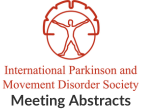Movement disorders in neurologic consultation of Marrakesh University Hospital
Objective: Describing the epidemiological and clinical aspects of the movement’s disorders in Marrakesh. Analyzing difficulties of management of this disease. Comparing our data with international…Using tablet devices to educate patients about dystonia and botulinum toxin for movement disorders
Objective: To assess the efficacy of tablet-based learning modules for patient education in an outpatient movement disorders center. Background: Educational materials improve patient understanding, and…Trust the Patient not the Doctor: Health-related Quality of Life in Cervical Dystonia
Objective: Assess measures on health-related quality-of-life, and anxiety and depression in patients with cervical dystonia attending University Hospital specialist clinic. Background: Non-motor symptoms are a…Not just runners: Adult onset lower limb dystonia
Objective: To describe a new cohort of adult onset, lower limb dystonia patients, comparing runners to non-runners. Background: Adult onset lower limb dystonia is an…Cohort profile of the Japan Dystonia Consortium: Genetic diagnosis and characteristics of movement disorders in Japan
Objective: To reveal molecular epidemiology of hereditary dystonia through resequencing of the currently-known dystonia genes and identification of novel genetic defects. Background: The Japan Dystonia…Asynchronous Consultation in Movement Disorders: The East Africa Hub
Objective: Improving education and care in movement disorders through telemedicine. Background: In 2012, the Movement Disorders Society launched a telemedicine project to enable professionals from…Jumping stump: Movement disorder with structural CNS pathology – Look before you label
Objective: Introduction. Jumping stump syndrome is considered to be a peripherally induced movement disorder due to damage to peripheral nerves leading to dystonia, myoclonus or…Rapid onset hemidystonia-hemichorea in DYT 12: Is “SWAN NECK” limb deformity a clinical sign?
Objective: Introduction Rapid onset dystonias are uncommon.Common causes are drugs, post-stroke dystonia, or metabolic causes like hypo/hyperglycemia,hypocalcemia or hypomagnesemia Background: Case presentation 11 year boy…Reversible Extrapyramidal features as unusual presentation of central pontine myelinolysis: A case report
Objective: To be acquainted with the extrapyramidal symptoms developed during the course of central pontine myelinolysis. To emphasize the importance of neuroimaging in the diagnosis…Atypical presentation of PANK2 mutation: A case report
Objective: To describe an atypical presentation of a PANK2 mutation. Background: PKAN (Pantothenate-Kinase-Associated Neurodegeneration) is the most common NBIA (Neurodegeneration with brain iron accumulation) disorder,…
- « Previous Page
- 1
- …
- 26
- 27
- 28
- 29
- 30
- …
- 42
- Next Page »
